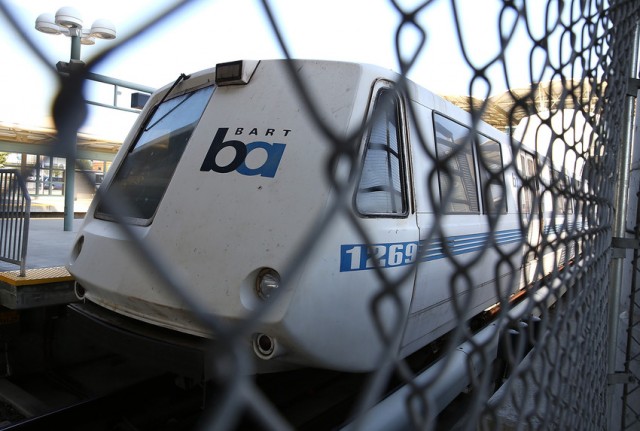
During months and months of negotiations, BART management and its biggest labor unions moved slowly, acrimoniously and messily closer together in their contract talks. For example, the unions started out seeking something like a 23 percent wage increase over four years, while the agency countered with a 4 percent offer. Hard to see how that gap would be closed, right? But those were opening positions in the weeks before workers struck for five days in July.
After a 30-day extension of talks and a 60-day cooling-off period, several more strike deadlines and a couple of slow-motion rounds of on-again, off-again talks, the landscape looks a little different. By the end of last week, management had upped its offer to a bit more than 10 percent over four year; the unions had come down to 12 percent over three years. That by itself wasn't enough to get a deal done, but it does demonstrate some force of compromise at work.
Fast forward to yesterday, as BART and the unions worked against their latest deadline. There was virtually nothing to report — and by report, I mean blog what I was distilling from tweets and various newscast nuggets — except meal deliveries to the negotiating site. Then at 10 p.m., a contingent of state legislators emerged from the talks and announced that discussions had been stopped cold six hours earlier when BART management had presented a "last, best and final offer" to the unions. The way the legislators and union leaders described it — and what BART General Manager Grace Crunican seemed to confirm — the proposal amounted to a take-it-or-leave it offer. Although the unions agreed to keep talking through today, a strike suddenly seemed not only possible, but likely.
But what exactly is a "last, best and final offer" and how might it fit into the overall tactics of the BART negotiations? KQED's Mina Kim talked to Paul Roose, a professional mediator who oversaw difficult BART negotiations in 2009, about BART's bargaining strategy. He described the agency's move as "a strong bargaining signal and it should be taken seriously by everybody involved." He added the offer could be a prelude to even tougher action by BART:
A last best and final offer on a legal standpoint is a basis for the employer to implement terms and conditions on the unions should they be unable to reach an agreement. But it doesn't mean that the efforts to get a tentative agreement acceptable to both sides has stopped.
On a historical note, close observers of the BART negotiations point out that BART announced a "last, best and final offer" in talks with the Amalgamated Transit Union during talks in 2009. Then, the principal dispute was over a long list of concessions the transit agency wanted from the union. The BART "final" offer prompted the ATU to issue a strike notice. But the two sides kept talking and eventually settled without an imposed contract or a walkout.
